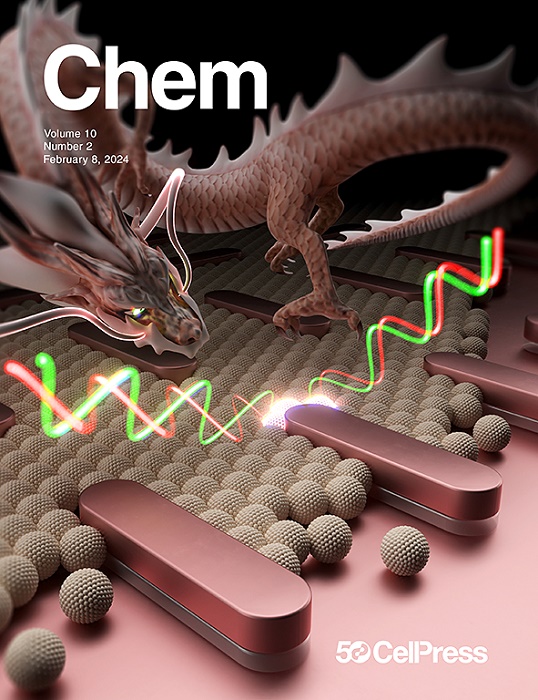具有聚集诱导发射的闪烁体
IF 19.1
1区 化学
Q1 CHEMISTRY, MULTIDISCIPLINARY
引用次数: 0
摘要
闪烁体是高能辐射探测器的重要组成部分,用于高能物理、无损检测、放射化学和医学诊断等领域。具有聚集致发光(AIE)的闪烁体,通过合理的分子设计和制备技术,可以有效地克服现有无机和/或有机闪烁体的固有缺陷,如无机类型的成本高、力学性能差,有机类型的出光率低、聚集致猝灭等,从而具有新颖的光电性能和优越的性能,具有更广泛的应用前景。本文根据AIE闪烁体的发光机理和构建策略,从分子角度将其分为荧光闪烁体、热激活延迟荧光闪烁体、金属簇状闪烁体、有机-无机杂化闪烁体和金属-有机框架闪烁体。本文首先分析了AIE闪烁体的构建策略和结构-性能关系,然后从其分子结构和光电性能方面介绍了AIE闪烁体的应用。本文章由计算机程序翻译,如有差异,请以英文原文为准。


Scintillators with aggregation-induced emission
Scintillators are vital components in high-energy radiation detectors and are used in fields like high-energy physics, non-destructive testing, radiochemistry, and medical diagnostics. Scintillators with aggregation-induced emission (AIE), through rational molecular design and preparation techniques, can be endowed with such properties that effectively overcome the inherent defects of existing inorganic and/or organic scintillators, such as high costs and poor mechanical properties in inorganic types and low light yield and aggregation-caused quenching for organic kinds, thus affording novel optoelectronic properties, superior performance, and broader applications. This review classifies AIE scintillators from a molecular perspective, based on their luminescence mechanisms and construction strategies, into fluorescent scintillators, thermally activated delayed fluorescence scintillators, metal cluster scintillators, organic-inorganic hybrid scintillators, and metal-organic framework scintillators. This review starts with analyses of these building strategies and the structure-performance relationships and then describes the applications of AIE scintillators based on their molecular structures and optoelectronic properties.
求助全文
通过发布文献求助,成功后即可免费获取论文全文。
去求助
来源期刊

Chem
Environmental Science-Environmental Chemistry
CiteScore
32.40
自引率
1.30%
发文量
281
期刊介绍:
Chem, affiliated with Cell as its sister journal, serves as a platform for groundbreaking research and illustrates how fundamental inquiries in chemistry and its related fields can contribute to addressing future global challenges. It was established in 2016, and is currently edited by Robert Eagling.
 求助内容:
求助内容: 应助结果提醒方式:
应助结果提醒方式:


